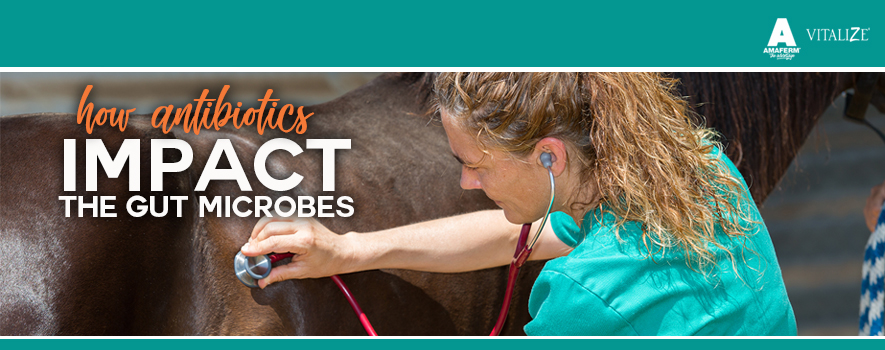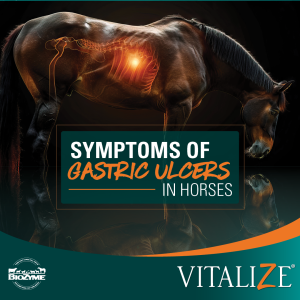
Gut Microbiota: it is all the rage right now in the equine industry. But what does it mean? The equine digestive system holds billions of tiny, living organisms that play a role in how your horse digests and processes food, and also in the onset of challenges like colic, laminitis or weight loss. (To learn more about these tiny bugs, click here.) Small shifts in this active population are happening every day and often go unseen. However, a large shift in the microbial population inside your horse could potentially cause significant problems.
What causes a “shift”?
Horses are creatures of habit. So, when something changes in their lives, that’s when there is likely to be a shift in the microbial population. This “shift” in the gut can happen because of a change in the weather, a new horse on the property, getting the wrong feed (yikes), showing, hauling, vaccinating, worming or any kind of inconsistency that leads to stress. While some of these stressors, like the weather, are out of our hands, we can work to preserve the balance in the gut and mitigate the changes that cause harmful shifts.
Antibiotics purge all bugs
Perhaps one of the most challenging points in managing these shifts in the microbe ratio is when your horse requires antibiotic treatment. Although oral antibiotics work to treat infections in the body, they are also concurrently working against all bugs inside the gut. The nature of the word antibiotic means “against living organisms,” which means they rid both the good and the bad microbes. This causes an obvious BIG shift in the horse’s gut.
Antibiotics and the Amaferm advantage
If your horse is on an antibiotic, chances are he or she is showing signs of digestive upset such as diarrhea, loose stool, constipation or even colic. This is because through antibiotic treatment, the bugs in his or her belly have been significantly diminished, making it difficult to digest and process foods regularly. Enter Amaferm. Amaferm is a natural, precision-based prebiotic that works with the “good” microbes already in the gut and helps them thrive, helping offset the shift in the gut ratio. By feeding Amaferm along with your horse’s antibiotic treatment, your horse will be healthier and happier because more good microbes are able to survive, therefore keeping the gut at a comfortable microbial ratio.
I feed a probiotic, isn’t that good enough?
The simple answer? No. Despite their similarity in name, probiotics and prebiotics are quite different in nature and function. Probiotics add external, living organisms to the animal’s gut, while prebiotics work with the bugs that are natural to that specific animal and help them grow. Because probiotics are living, and antibiotics want to kill living bugs, these are not the best option for use during antibiotic therapy. Prebiotics are non-living compounds that enhance the growth and efficiency of the microbes already in the gut. They have been proven to remain effective during antibiotic treatments. In addition, many probiotics are not resilient to weather changes, so those probiotics sitting in your tack room in the 25-degree weather may not be viable anymore. Because of these reasons, we suggest Amaferm to naturally support your horse’s microbiome.
How does my horse get Amaferm?
The easiest way to give Amaferm during antibiotic treatment is through Vitalize® Equine Recovery Gel. We recommend administering before, during and after the antibiotic treatment for maximum comfort. To ensure your horse is healthy and happy even after the antibiotics are gone, try Vitalize® Equine Digest More® Plus, a pelleted, top dress digestive supplement that not only contains Amaferm for the “good bugs,” but also contains MOS, which helps combat the “bad bugs,” as well.
Where to buy Vitalize products?
• Find your local dealer by entering your zip code here!
• Buy online at these retailers ValleyVet.com, NRSWorld.com, or FarmVet.com.
• Unsure about which product is right for your horse? Take the Vitalize Product Quiz!


